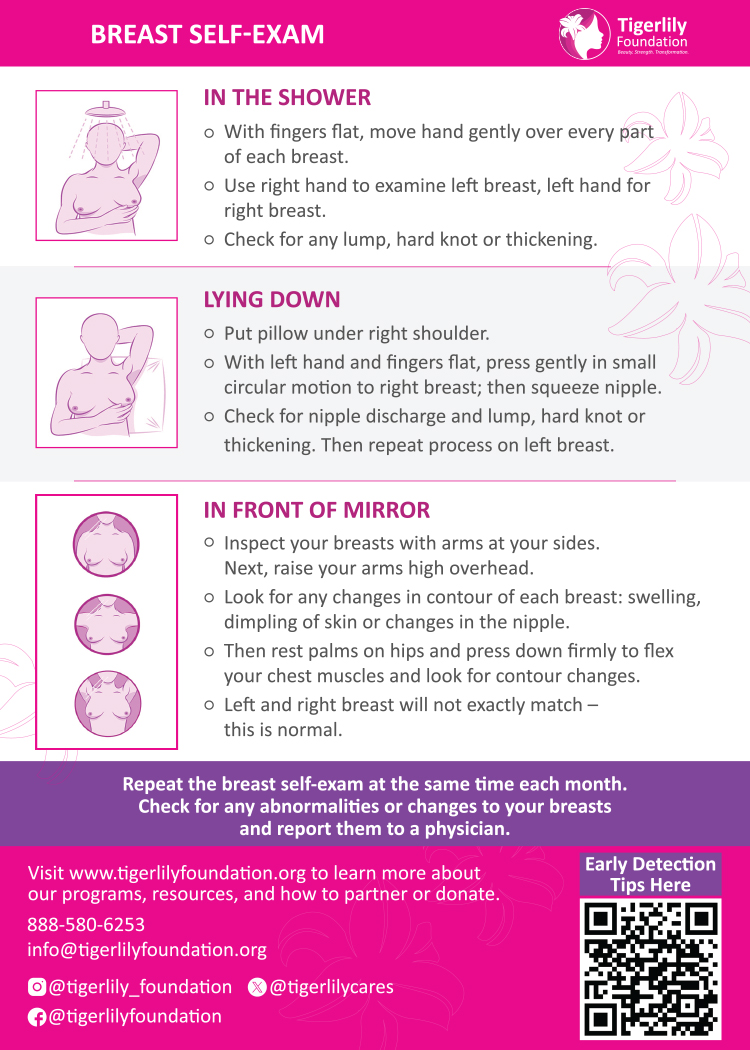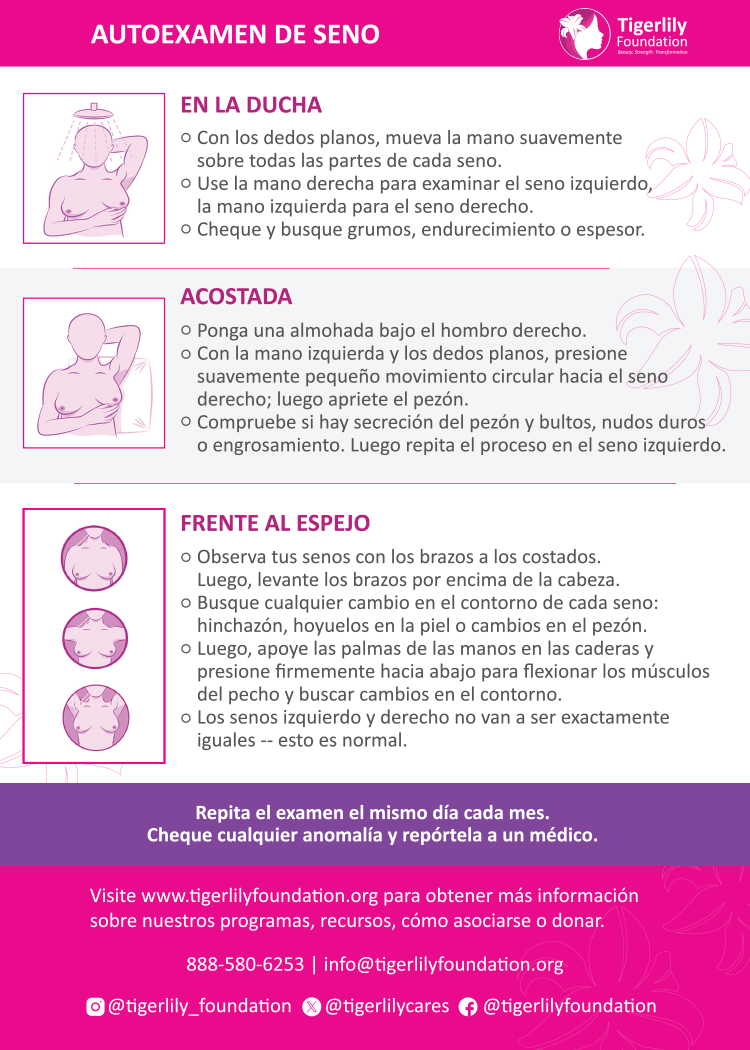Early Detection

It is important to detect breast cancer as early as possible. The sooner it is detected, the faster the doctor can determine the right treatment plan for you.
Early detection starts with knowing your body well, and understanding the type of changes that you need to look out for. You are in the best position to know the normal look and feel of your breasts. Make a habit of regularly doing breast self exams so that you can identity changes early. Most importantly, if you notice any changes, speak to your doctor right away. Also, you should trust your instincts. If you are uncomfortable with what your doctor says, make arrangements to have a second opinion.
The most common symptom of breast cancer is a lump. However, if you do find a lump – don’t panic. Some women have naturally lumpy breast, and some have lumps that come and go with their period. Other breast cancer symptoms include dimpling, rash or itching, nipple discharge, lumps in/on the underarm area. It is important to do breast self examinations or conduct regular breast cancer screening (as is age appropriate). The types of breast cancer screening methods are described in our screening section.
Early detection focuses on identifying the cancer before symptoms have begun to show or identifying breast cancer in its early stages. There are different guidelines for women that have an average risk of being diagnosed with cancer compared to those who are considered to be at a higher risk for cancer.
Women who are considered to have an average risk of breast cancer are those who have not had chest radiation therapy before the age of 30, have not had cancer in the past, do not have a significant family history of breast cancer, or any genetic mutations like BRCA. The guidelines set by the American Cancer Society are: yearly optional mammograms for women between 40 and 44 years of age; yearly mammograms for those 45-54 years old; and those 55+ can decide to continue with annual mammograms or for a mammogram every other year.
High-risk women are those who: have the BRCA1 or BRCA2 gene mutation; have a first-degree relative (child, parent, or sibling) with a BRCA1 or BRCA2 mutation but have not had genetic testing done; had chest radiation therapy during the ages of 10-30; personally had or had family members with Cowden syndrome, Li-Fraumeni syndrome, or Bannayan-Riley-Ruvalcaba syndrome; or have a 20-25% lifetime risk of cancer based on assessment tools such as the Claus model. These women are recommended to have an MRI and a mammogram every year; this usually begins at age 30. High-risk women should also educate themselves and work closely with their doctor to be proactive about their health.
Various ethnic groups have different incidences of the BRCA1 and BRCA2 gene.
- African-American women have an incidence rate of 1% of the BRCA1 gene and a rate of 3% of the BRCA2 gene.
- Ashkenazi Jewish women have a higher rate of the BRCA1 gene, at 8-10%, and have a 1% incidence of the BRCA2 gene.
- Asian-American women have a rate of under 1% of the BRCA1 gene, and there is no information available about the rate of the BRCA2 gene.
- Caucasian women that are not Ashkenazi Jewish have a 2-3% rate of the BRCA1 gene and a 2% rate of the BRCA2 gene.
- There is a 4% rate of occurrence of the BRCA1 gene in Hispanic women, and the information is not available regarding the incidence of the BRCA2 gene.
Below, we provide information on breast self exams, which can benefit younger women.
Self Breast Exam
When your breasts are developing, you may feel lumps. These usually disappear on their own. If you lump is sore to touch or if it appears to be getting bigger or if you want to speak with someone about it, you can speak to your pediatrician or general practitioner. You may also speak with a family member or a school nurse. You may request a female nurse or doctor if that makes you feel more comfortable. The nurse or doctor will examine you and let you know if there is anything to be concerned about.
Sometimes you may have some pain in your breasts. This pain can be a mild, or it can be sharp, stabbing or burning. The pain may be affected by changing hormone level such as around the time of your period. If this pain worries you, speak to your doctor.
Download our BREAST SELF-EXAM Card to use as reminders or to share with others.
Breast Self Exam (English)
Breast Self Exam (Spanish)
How to Do A Breast Self Exam
Regular breast self examinations are an important key to being your best advocate.
- Look at your breast in the mirror. It is important to know how your breast look and feel. Doing regular self examinations helps you to get familiar with the size, color, shape and “feel” of your breasts. important changes to look for are: dimpling, puckering, redness, soreness, fluid/discharge, rash or swelling.
- Raise your arms and see if you detect any of the changes above.
- Lay down and feel your breasts. Use your left hand to check your right breast and your right hand to check your left breast. Firmly, apply the pads of your fingers, keeping them flat and in a circular motion, examine your entire breast. Go from side to side then top to bottom. Go from your collarbone to where you abdomen starts, then your cleavage to your armpits. Make sure you choose a pattern to make sure you cover the entire breast.
- Repeat the same steps when standing or sitting.
Contact your doctor if you feel any of the following:
- Lump, hard knot or thickening inside the breast or underarm area
- Swelling, warmth, redness or darkening of the breast
- Itchy, scaly sore or rash on the nipple
- Change in the shape/size of the breast
- Dimpling or puckering of skin
- Nipple discharge
- Persistent pain


